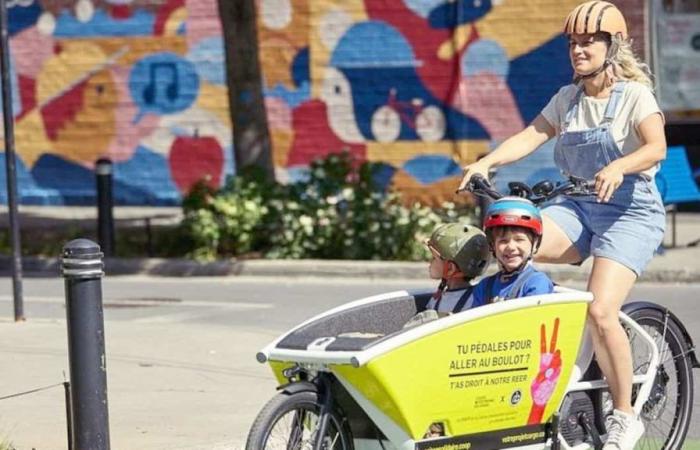Driven by fuel-to-freedom cyclists, cargo bikes do not go unnoticed, easily transporting groceries, equipment or passengers. The presence of these bicycles on cycle paths gives rise to the idea that they can really replace the car, even going so far as to replace the household’s second vehicle, or even its only automobile.
Recently launched by Vélo Québec, the “By bike, everything is possible” campaign aims to “raise awareness of the cargo bike and make Quebec households want to try it,” explains Magali Bebronne, program director at Vélo Québec.
More and more families, delivery companies, entrepreneurs and professionals have already adopted it.
Whether extended towards the rear (two wheels), tricycle type (three wheels) or front-loading (two wheels), these bicycles allow you to transport shopping, children, luggage, goods, tools, etc., on a platform, in a box, baskets, panniers, etc.
By sparing cyclists’ calves, electric assistance has helped to make them more accessible.
Easy to learn driving
“At first it’s destabilizing. The balance is different and you shouldn’t make turns too sharp, but it quickly becomes intuitive,” says Ms. Bebronne.
For Geneviève Le Bel Beauchesne of Saint-Jean-sur-Richelieu, who adopted the cargo bike several years ago, it has become the preferred means of transport with her daughters.
Given the fairly flat gradient of the streets of Saint-Jean-sur-Richelieu, Geneviève Le Bel Beauchesne’s tricycle cargo bike does not have electrical assistance.
Photo provided by Vélo Québec
“I wouldn’t have done it with a traditional bike since I always had the fear of losing my balance and falling, I didn’t feel safe,” she says.
In the front basket of her cargo bike, Rose-Aimée (6 years old) and Élie (4 years old) go for a ride whatever the season. Whether it snows or rains, they are always sheltered, while their dad or mom pedals, dressed according to the vagaries of Mother Nature.
Way of life
Josiane Regimbal from Quebec, for her part, discovered that using a cargo bike could become a way of life during a trip to Copenhagen, where cargo bikes are widely used.
The pediatric speech therapist and mother of little Lucie (5 years old) jumped at the chance to try it at the invitation of Vélo Québec and Dumoulin Bicyclettes as part of the new campaign, then decided to become the owner of her own mount.
The family who lives in the Saint-Sauveur district chose an electrically assisted model extended towards the rear, to benefit from better visibility, facilitate sometimes tighter turns, and then prevent the effort required from becoming a brake.
The cargo bike extended towards the rear allows Josiane Regimbal to benefit from better visibility on street corners in the Saint-Sauveur district and to make tight turns.
Photo provided by Vélo Québec
The ease of getting around Quebec by navigating through the works, of parking near the door of the places to visit, then the possibility of using it as part of her work won over Ms. Regimbal who will cycle 12 months a year.
Healthy and eco-friendly choice
“The cargo bike adds physical activity to your day and your state of mind is not the same,” says the woman who also respects her environmental values, since the bike does not produce GHGs, compared to the car.
Then its acquisition and maintenance costs are much lower (from $5,000 with electrical assistance).
“As a replacement for the second car, by combining the cargo bike with car sharing and public transport, from an economic point of view, it makes real sense,” explains Ms. Bebronne.
Vélo Québec would also like to see the government offer incentives, such as financial support for families who wish to purchase a cargo bike.
“It allows many trips to be made by bicycle rather than by car and households need a helping hand to make the transition,” explains Ms. Bebronne.







